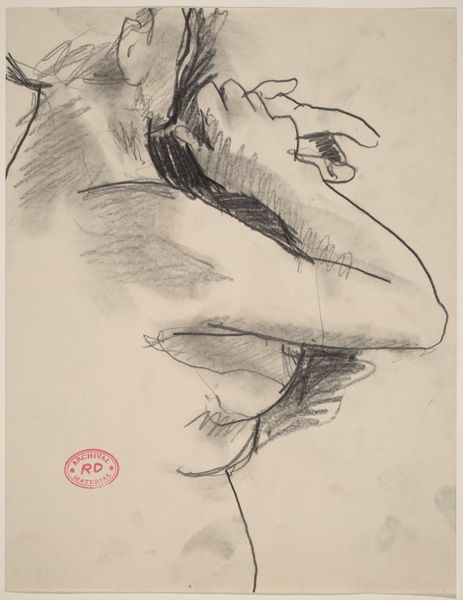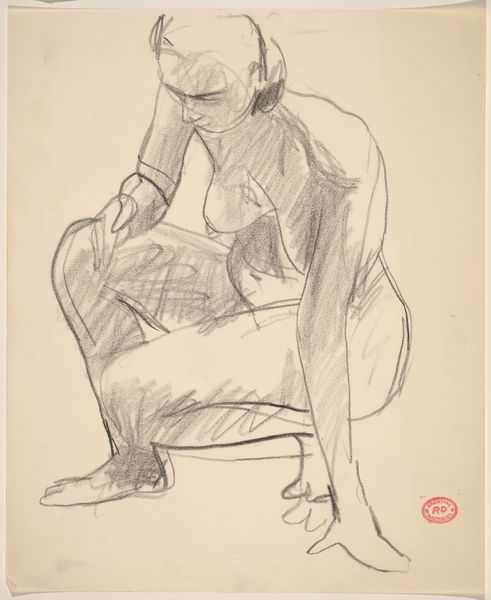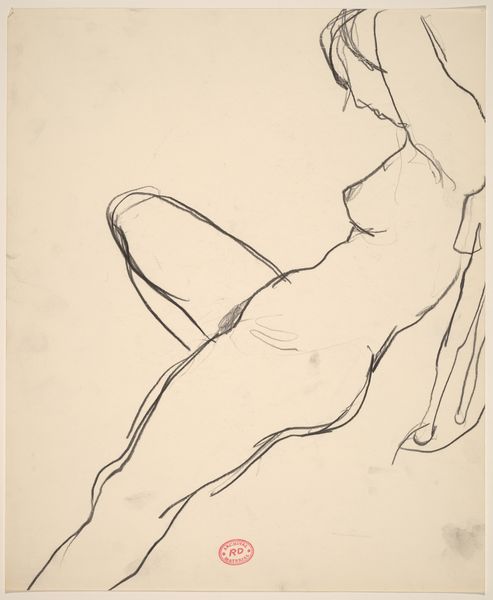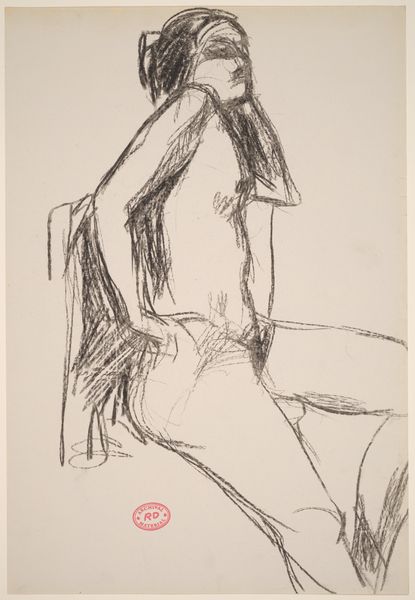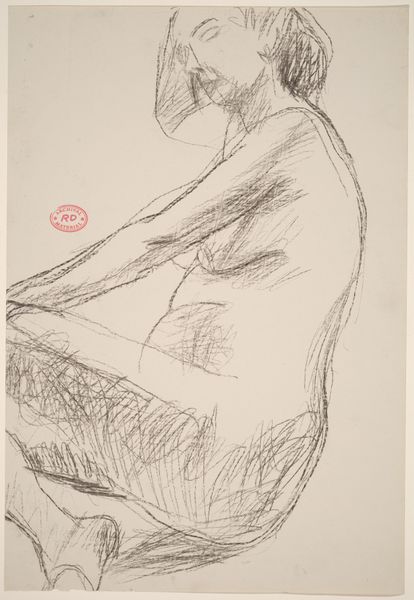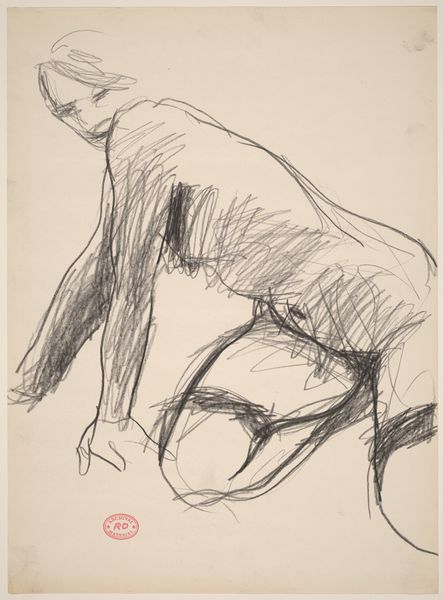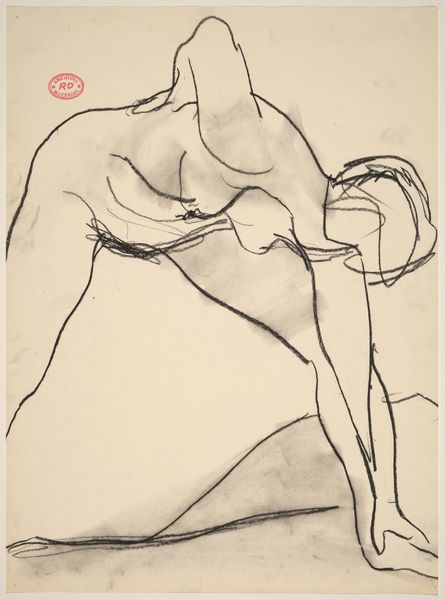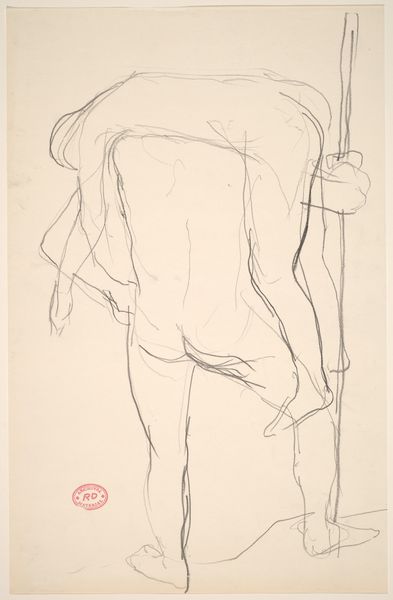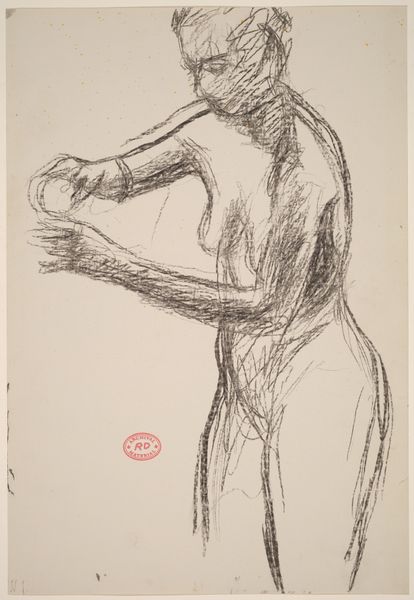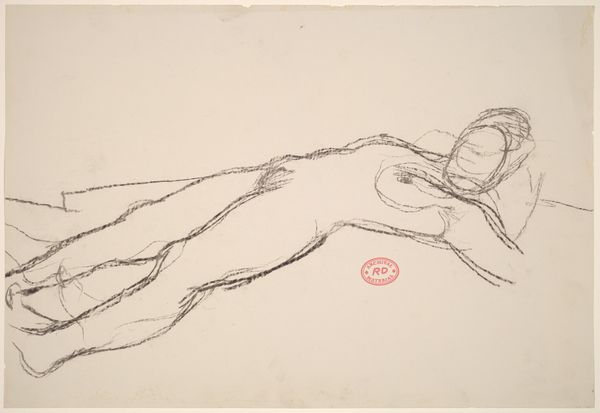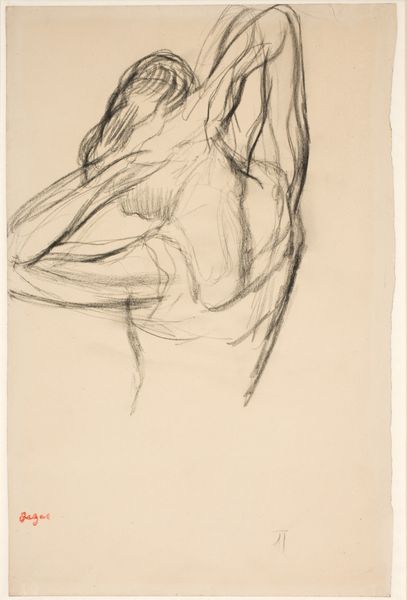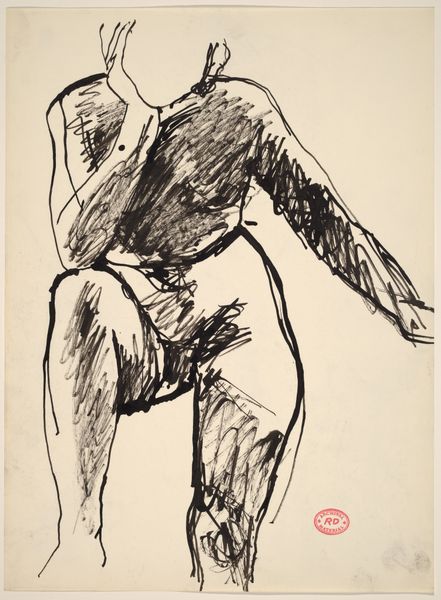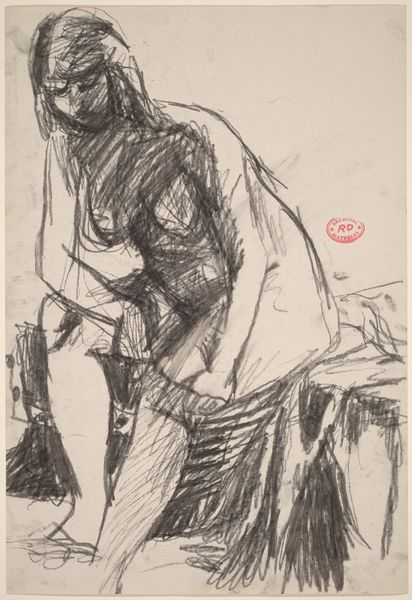![Untitled [torso of female nude] by Richard Diebenkorn](/_next/image?url=https%3A%2F%2Fd2w8kbdekdi1gv.cloudfront.net%2FeyJidWNrZXQiOiAiYXJ0ZXJhLWltYWdlcy1idWNrZXQiLCAia2V5IjogImFydHdvcmtzL2UxZTcwNTlkLTRjMzItNDNkYy05NjRkLTFjMGNmYjhiZTEzMS9lMWU3MDU5ZC00YzMyLTQzZGMtOTY0ZC0xYzBjZmI4YmUxMzFfZnVsbC5qcGciLCAiZWRpdHMiOiB7InJlc2l6ZSI6IHsid2lkdGgiOiAxOTIwLCAiaGVpZ2h0IjogMTkyMCwgImZpdCI6ICJpbnNpZGUifX19&w=3840&q=75)
drawing, pencil
#
drawing
#
ink drawing
#
figuration
#
bay-area-figurative-movement
#
pencil
#
academic-art
#
nude
Dimensions: overall: 28 x 21.6 cm (11 x 8 1/2 in.)
Copyright: National Gallery of Art: CC0 1.0
Curator: It’s spare, almost skeletal. It has a tentative quality, as though Diebenkorn were feeling out the form in charcoal and pencil. Editor: Exactly. We are looking at an “Untitled [torso of female nude]” work completed sometime between 1955 and 1967. This belongs to a group of drawings where Richard Diebenkorn really begins investigating the human form through a combination of careful observation and abstraction. Curator: It strikes me that the areas of intense shading contrast so dramatically with the thin outlines; they’re rendered with immediacy and a certain restless energy. Editor: It speaks to the broader art-historical context. Academic figure drawing served a didactic purpose. Artists often worked from live models in the studio setting to explore the fundamentals of form, light, and anatomy. I wonder, did Diebenkorn envision these studies reaching a public audience beyond the art studio? Curator: Interesting thought. The availability and sourcing of materials for works like this would significantly dictate artistic choices. Think of charcoal and graphite's relatively low cost versus something like oil paint or bronze – that surely made this process one of unfettered exploration. The immediacy allowed him to experiment without significant financial consequence. Editor: Yes, and this points toward the changing role of the nude figure, no longer the idealized form demanded by academies, but something altogether more human and individualized, fitting within the aesthetic demands of its contemporary market and patronage systems. Curator: Well, by de-emphasizing highly-finished detail and using inexpensive media like charcoal, we are able to really focus on Diebenkorn's raw talent for capturing gesture. Editor: A key aspect for Diebenkorn, it seems. His art reminds us of the complex web of social factors that give it meaning. The evolving cultural politics surrounding representation profoundly shaped what viewers saw and valued. Curator: Precisely! I am more appreciative now of what this choice of materials and approaches offers us by way of insight into Diebenkorn’s production practice. Editor: And for me, reflecting on how such simple artforms serve a rich historical and institutional purpose reminds us that all forms of art can embody an intersection between personal and historical meaning.
Comments
No comments
Be the first to comment and join the conversation on the ultimate creative platform.

